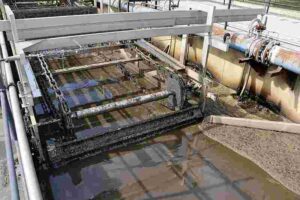Bioremediation Definition, Importance, Application, Factors
Bioremediation is the employment of biochemical reactions, and biological organisms to improve the quality of degraded soil, water or air. This article discusses bioremediation definition, importance, application, and factors, as outlined below;
-Bioremediation Definition: 5 Ways to Define Bioremediation
-Application of Bioremediation
-Factors affecting Bioremediation
Bioremediation Definition: 5 Ways to Define Bioremediation
Bioremediation is the deliberate and systematic use of biological organisms and processes to reverse the environmental impacts of degradation and improve water, soil, and air quality in the ecosystem [5].
The above can be viewed as a basic introduction to bioremediation as a concept and practice, with reference given to primary factors like organisms and processes involved.
An alternative bioremediation definition is given below, which gives more clarity to the concept in terms of organisms and processes;
Bioremediation is the act, process and technology whereby organisms like microbes (bacteria, fungi), and processes like biodegradation, are employed for the breakdown and removal of unwanted elements in sites that have been affected by pollution, among other conditions [1].
The following bioremediation definition addresses the concept as a technology; and mentions some applicable types of bioremediation;
Bioremediation technologies are the combination of equipment and practices that enable humans to carry out controlled restoration of degraded environments using biological tools, in the form of techniques like biostimulation, bioaugmentation, biosparginng, bioventing, composting, landfarming, bioleaching, biopiling; and types like in-situ, ex-situ, phytoremediation and mycoremediation [6].
In the next bioremediation definition that is given, effort is made to highlight the basics of bioremediation process, as follows;
Bioremediation is a form of environmental remediation that follows a three-step process of; organic stimulation, detoxification and restoration, using mainly microbes and biochemical reactions to reverse environmental degradation.
Lastly, bioremediation definition is outlined to include some applications of bioremediation;
Bioremediation is the practice of stimulating and utilizing biological tools for applications like; oil spill cleanup, wastewater treatment, and agricultural soil restoration.

Importance of Bioremediation
The importance of bioremediation stems from its alignment with the pillars of sustainable development; which include economic, environmental and social sustainability.
1). Economic Sustainability (as an Importance of Bioremediation)
Economic sustainability of bioremediation can be attributed to the fact that it involves mainly renewable resources and does not pose any risk of resource depletion to the economy, since the main tools involved can all be replenished through natural recycling process.
As such, the implementation of bioremediation as an environmental management strategy is encouraged under sustainable economic models like green economy and circular economy [4].
2). Environmental Sustainability
Environmental sustainability is one of the most obvious areas of importance of bioremediation.
Bioremediation is environmentally sustainable because it does not involve synthetic techniques, tools or materials that can alter the equilibrium of the natural ecosystem.
Rather, the concept of bioremediation is inspired by processes that occur naturally in forests, tundras, savanna grasslands and prairies, among other biomes.
When unwanted materials are removed through biological breakdown, they undergo mineralization and supply nutrients to soil [2].
Bioremediation also facilitates soil organic activity that can help optimize carbon sequestration. This means that bioremediation is an effective means of soil conservation in most cases.
Carbon sequestration and other processes facilitated by bioremediation, can also help reduce air pollution and mitigate climate change.
3). Social Sustainability (as an Importance of Bioremediation)
The social sustainability of bioremediation is based on the fact that it does not pose any significant risk to the human populace.
Bioremediation does not consume large amounts of energy resources that could cause electricity outages or cripple economic activity. It also does not have any notable effect on human health, settlement patterns, or socioeconomic dynamics.
Application of Bioremediation
The application of bioremediation can be assessed from various perspectives including;
1). Oil spill cleanup
2). Wastewater treatment
3). Soil restoration for agriculture
4). Site preparation for afforestation
5). Land-use conversion
Factors affecting Bioremediation
Factors affecting bioremediation are mostly physicochemical parameters [3] like;
1). Moisture retention capacity
2). pH
3). Oxygen content
4). Temperature
5). Nutrient concentration
Other factors affecting bioremediation are;
6). Type of contaminant(s)
7). Severity of degradation
Conclusion
Bioremediation is the act and process whereby degraded environments or media are restored using biological organisms, processes and techniques.
Bioremediation is important because of its;
1. Economic Sustainability
2. Environmental Sustainability
3. Social Sustainability
The applications of bioremediation include; oil spill-cleanup, wastewater treatment, soil restoration, site preparation, and land-use conversion.
Factors affecting bioremediation are; moisture retention capacity, pH, oxygen content, temperature, nutrient concentration, type of contaminants and severity of degradation.
References
1). Bala, S.; Garg, D.; Thirumalesh, B. V.; Sharma, M.; Inbaraj, B. S.; Tripathi, M. (2022). "Recent Strategies for Bioremediation of Emerging Pollutants: A Review for a Green and Sustainable Environment." Toxics 10(8):484. Available at: https://doi.org/10.3390/toxics10080484. (Accessed 6 January 2023).
2). Ivica, K.; Hrenović, J.; Zgorelec, Z.; Durn, G.; Brkic, V.; Delač, D. (2022). "Bioremediation of Agriculture Soil Contaminated by Organic Pollutants." Energies 15(4):1561. Available at: https://doi.org/10.3390/en15041561. (Accessed 6 January 2023).
3). Mishra, M.; Singh, S. K.; Kumar, A. (2020). "Environmental factors affecting the bioremediation potential of microbes." Microbe Mediated Remediation of Environmental Contaminants. Available at: https://doi.org/10.1016/B978-0-12-821199-1.00005-5. (Accessed 3 January 2023).
4). Morseletto, P. (2022). "Environmental principles for modern sustainable economic frameworks including the circular economy." Sustainability Science 17(3). Available at: https://doi.org/10.1007/s11625-022-01208-w. (Accessed 6 January 2022).
5). Philp, J. C.; Bamforth, S. M.; Singleton, I.; Atlas, R. M. (2005). "Environmental Pollution and Restoration: A Role for Bioremediation." Bioremediation: Applied Microbial Solutions for Real-World Environmental Cleanup. Available at: https://doi.org/10.1128/9781555817596.ch1. (Accessed 6 January 2023).
6). Sayqal, A.; Ahmed, O. B. (2021). "Advances in Heavy Metal Bioremediation: An Overview." Applied Bionics and Biomechanics 2021(5):1-8. Available at: https://doi.org/10.1155/2021/1609149. (Accessed 6 January 2023).




